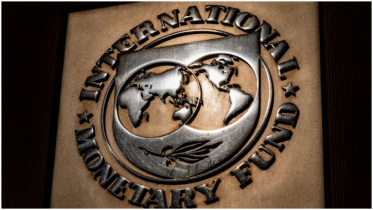De-dollarisation in a multipolar world: What is Bangladesh's strategy?

In recent times, we have seen two major shifts in geopolitics: a move away from the US dollar as the global currency reserve; and an increasing focus on bilateral currency swaps for trade.
In this article, we will delve deeper into these two issues to understand their potential impact on Bangladesh in the long run.
Foundation of petrodollar at risk
The importance of the petrodollar is starting to show some cracks, as Saudi Arabia has indicated an interest in hedging and diversifying its security by normalising relations with neighbouring countries. Additionally, China currently purchases 25% of Saudi Arabia's oil exports and has recently agreed to settle some portions of the oil trade in Yuan, in an effort to diversify from the dollar.
This move would have been unthinkable just a few years ago. It is likely that oil trading in different currencies will only increase as more countries like Russia and India begin to trade in Ruble or Rupee to avoid trading in dollars.
Dollar used as sanction tool
The weaponisation of the dollar is the biggest threat to its status as a global currency reserve. For instance, when US$600 billion of Russian reserves were frozen in a matter of days, it sent a signal to other countries that the US could use its currency as a tool for foreign policy.
As a result, more countries are becoming wary of US hegemony and are slowly but surely moving away from the US dollar reserve. Moreover, as the West continues to use sanctions as a foreign policy tool, expecting foreign debts to be paid in dollars may not be realistic.
The weaponisation of the US dollar is not sustainable in the long run, as it only compels foreign governments to find alternative assets. For example, China has been reducing its holdings of US Treasuries from one trillion to 859 billion, to an all-time low, as its priority is to find alternate assets beyond the reach of the US government.
Increasing gold reserve holdings
Before the reign of fiat currency, the US dollar was tied to the gold standard, but it was decoupled in 1971. Since then, the US government has been using monetary policy to control its currency and manage its economy. However, fiscal policy is managed with a political lens, which can lead to a decrease in common sense, resulting in holding assets that are just paper.
Therefore, in recent times, we have observed that various governments are increasingly holding gold as part of their reserves. This is because holding gold provides a safe-haven asset and store of value, especially during government debts or inflation concerns.
Currency swap
Bilateral trade between governments and accepting each other's currencies is becoming the new norm to reduce US dollar dependency. For instance, 18 countries, including Germany, Kenya, Sri Lanka, Singapore, UK, and Malaysia, have agreed to trade in Indian Rupee.
Similarly, Brazil signed an agreement last month with China to trade in Yuan. So far, China has signed agreements with 41 countries for Yuan clearing of bilateral trade. This practice is emerging in regional trade blocs, which have proximity and integrated trading relationships.
The BRICS is expanding, and Saudi Arabia and Iran have formally requested to join the group, along with countries like Argentina. In 2020, China and 14 other countries agreed to set up the world's largest trading bloc, the RCEP.
China's Belt and Road Initiative (BRI), adopted in 2013, has so far affiliated with 149 countries. Under the BRI, Chinese banks and companies seek to fund and build roads, power plants, ports, railways, and 5G networks around the world. However, Western governments have singled out the BRI as a debt trap, and China has adjusted to increasing scrutiny while funding the infrastructure projects to ensure their viability.
As these newer trading blocs mature, we can expect partner countries using baskets of currencies to trade among themselves to circumvent the US dollar.
US debt
The US debt is at an all-time high, accounting for 123.4% of the country's nominal GDP in December 2022. Most countries trading with the United States see that the internal US debt is not sustainable in the long term. The US borrows $2-3 trillion every year to sustain its economy, and every day, it spends $1.3 billion in interest. With this current borrowing trend, the dollar will surely face a crisis in the near future, and the world anticipates it.
Global banking in crisis
The US banking industry, which serves as the backbone for global trade, is showing increasing risk. The financial crisis in 2008 showed clear weakness, which was caused by the liberation of policy control. The financial market still shows a dire need for reforms, but it's hard to put guard rails as the US lobbyists are against it.
As the US can print money, being the global currency reserve, with impunity, it printed approximately $3.3 trillion in 2020 alone. Moreover, in 2022, the US government increasing interest rates to tame inflation resulted in a massive asset-liability mismatch in the banking sector and caused several bank runs and failures in billions of dollars. The biggest impact of the US interest rate hike was seen in emerging markets whose foreign debts are usually in dollars.
It is important to note that while external factors such as sanctions and higher energy prices have contributed to global inflation and economic instability, domestic economic policies and decisions made by governments in emerging economies also play a significant role in shaping their economic trajectory. Unplanned expenditures, lack of fiscal discipline, corruption, and weak institutions can exacerbate economic challenges and make countries more vulnerable to external shocks.
In addition, it is crucial for countries to diversify their economies and reduce reliance on any one sector or commodity. This can help them to mitigate the impact of external shocks and build resilience in their economies. Countries also need to strengthen their institutions and promote transparency and accountability to ensure that public resources are used effectively and efficiently.
All of the shifts mentioned above indicate that the world is moving from a unipolar system to a multipolar system. This ultimately means that the world is moving away from the US dollar and towards a basket of global currencies, with the Chinese RMB and Indian Rupee likely to play significant roles in regional trade, at least in Asia.
What it means for Bangladesh
We have two major risks, internal ones which consist of fiscal policy and governance in the financial sector; and external shocks which stem from shifts in trading blocs and decoupling of economies to adjust to geopolitics. In order to mitigate these two risks, I recommend the followings:
Internal shocks are firmly rooted in the current governance of our financial sector, which has shown a need for delayed but much-needed reforms. We should join regional trade blocs like ASEAN and focus on bilateral currency swaps for trading to reduce our exposure to the US dollar.
As we are net importers of crude oil for our energy needs, we must diversify our energy sources to include nuclear and green energy. Additionally, we need to shift investments from energy production to energy distribution to address the imbalance. To supplement this, we must start investing in hydrocarbons both inland and in the deep sea. Finally, our national debt, which is used to finance mega projects, should receive increased scrutiny from the government.
However, given Bangladesh's large population, it needs to focus on a domestic demand-driven economy and double down on connectivity to move goods and people at a faster pace, which means continuing to invest in infrastructure development. Our biggest risk is the key export dependency on garments, which urgently needs to be diversified into underdeveloped and underfunded sectors like talent export in the blue and white-collar category.
Additionally, we run the risk of food insecurity, so we need to focus on mechanised and smart agriculture supply chains with better access to finance. Bangladesh should also invest in a blue economy, which should be supported by our navy, as politics in the Malacca straits near the Indian Ocean may spill over into our maritime borders.
External shocks result from the decoupling of globalisation. Bangladesh is being squeezed between regional powers such as China, India, Russia, Japan, and, to a great extent, the collective West. We need a robust and engaging foreign policy to navigate between these powers, as it will become increasingly difficult to remain neutral. There is significant headwind in the militarization of Asian countries, as the West begins to create alliances in the region to counter China's economic and military rise.
Lastly, we should delay our graduation to developing countries by a decade, as we may end up in a middle-income trap, given the world's fast-moving uncertainty. We need to keep our borrowing costs low and preserve the trade concessions as LDCs as long as possible during this time. The last recommendation may sound controversial, but we are passing through the most difficult time since the Second World War, so it calls for desperate measures.—The Business Standard
.png)




